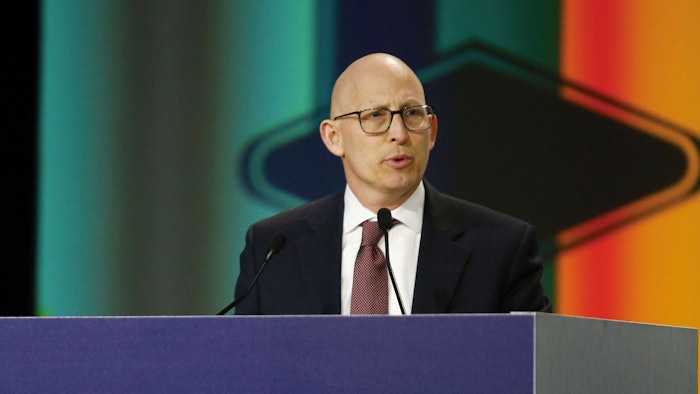Michigan provider data offers direction for kidney cancer surveillance
Beyond AUA, NCCN and EAU guidelines, Michigan urologist data provides consensus for optimizing renal cancer surveillance.

With appropriate follow-up after surgery for localized renal cell carcinoma (RCC), the majority of patients will die of other causes. Deaths after nephrectomy occur in 44% of patients more than two years later. What is the best way to follow up and for how long?
During Saturday afternoon’s State-of-the-Art Lecture, “Optimizing Follow-up Surveillance After Treatment of Localized Renal Cell Carcinoma,” Brian R. Lane, MD, PhD, a urologist in the division of urology at Corewell Health West in Grand Rapids, Michigan, provided an overview of follow-up guidelines from the AUA, the National Comprehensive Cancer Network (NCCN) and the European Association of Urology (EAU) for patients with RCC based on risk stratification and noted the nuances.
“There are subtle differences among the guidelines in terms of types of testing and when. In the AUA guidelines, for example, high-risk patients are advised to have axial abdominal imaging every six months for five years, but 30% of recurrences occur outside of the five-year window,” he said. Meanwhile, the literature isn’t much help. It shows mixed opinions on existing follow-up guidelines. “Common themes include individualizing follow-up care based on cancer TNM classification stage and path features, patient age and comorbidities, and considering the type of treatment and likely site of recurrence,” Dr. Lane said.
To shed light on how the guidelines and literature impact daily practice and how they can inform best practices for patients with RCC, Dr. Lane presented results from the Michigan Urological Survey Improvement Collaborative (MUSIC)-KIDNEY, a quality improvement initiative focused on improving urologic care for patients with localized renal masses throughout the state of Michigan.
MUSIC-KIDNEY, using modified Delphi methodology questionnaires, has collected data on more than 7,000 small renal mass cases from more than 260 high-volume urologists in Michigan from 46 high-volume practices (three outside of Michigan), with the goal of achieving consensus on how to perform better follow-up and reduce patients lost to follow-up. MUSIC-KIDNEY participants were presented with patient scenarios and asked questions, such as: “How often would you do follow-up abdominal imaging in this patient?” and “Does your frequency of imaging change in the second, third, fourth or fifth year of follow-up?”
“The Delphi methodology is designed to minimize the dominant voices so all voices can be heard,” Dr. Lane said.
What emerged from the data is a provider roadmap for surveillance of T1 renal masses after kidney cancer surgery that’s similar to AUA, NCCN and EAU guidelines, with the addition of specific recommendations for imaging and labs.
“Despite a bias toward ‘individualized’ follow-up plans, a consistent and unified surveillance strategy emerged through consideration of individual patient scenarios,” Dr. Lane said. The roadmap isn’t confined to the providers in the state of Michigan, of course.
For more information about the MUSIC-KIDNEY roadmap and how it may benefit your practice, no matter where it is, visit musicurology.com.











